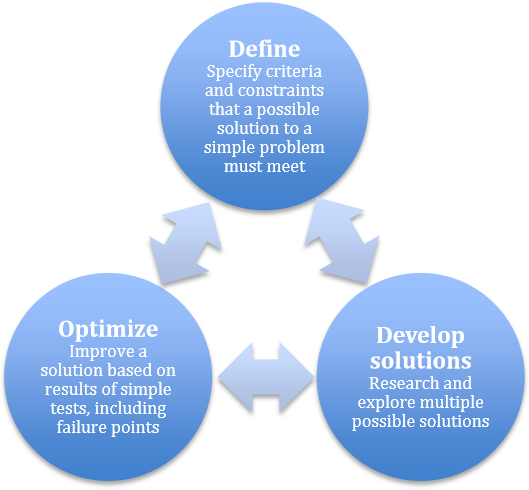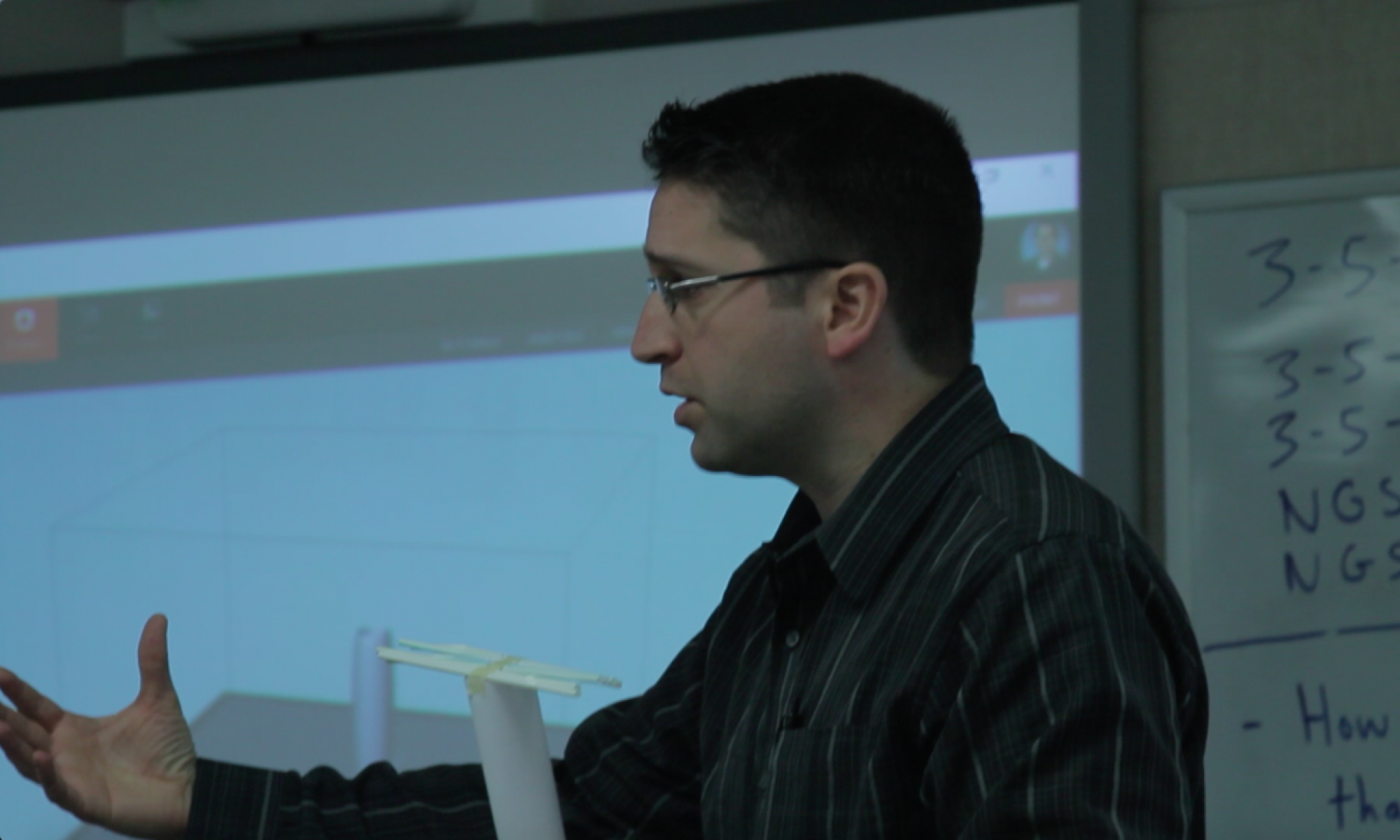Quintessential Design Process

What makes a design process qualified to be called a design process? Before we can determine what the best design process is for educational application, we need to look at what qualifies an approach as a design process in the first place. This is easier said than done because there are dozens of examples of design processes out there. Asking a professional is a good place to start so I asked an engineer what the best visual was for a real-life design process and he replied, “a giant hairball.” While seemingly less than helpful, this visual represents the number of people involved and the infinite number of complicating factors surrounding a modern large-scale design project.
The giant hairball visual may also explain why we as educators have created so many simplified examples to try and show a step by step approach that is student friendly. Suffice it to say, there is not one best example. However, by looking at multiple examples then an educator can begin to get a sense of what goes into most examples of a design process, as well as the various advantages and disadvantages of each model depending on the given context. Most contexts in education these days start with the standards, so this is a good place to look first.
International Society for Technology in Education (ISTE) Standard 4
Innovative Designer: Students use a variety of technologies within a design process to identify and solve problems by creating new, useful or imaginative solutions. Students:
- Know and use a deliberate design process for generating ideas, testing theories, creating innovative artifacts or solving authentic problems.
- Select and use digital tools to plan and manage a design process that considers design constraints and calculated risks.
- Develop, test and refine prototypes as part of a cyclical design process.
- Exhibit a tolerance for ambiguity, perseverance and the capacity to work with open-ended problems.
ISTE Standard 4, Innovative Designer, describes a level of foundational design skills that students should possess. While not a design process itself nor referencing a specific design process, the ISTE standard describes the need for students to be able to generate ideas and utilize the design process to solve open-ended problems that require iterative solutions. This generic and process-agnostic approach, makes the Innovative Designer standard an ideal educational foundation for this work.
Essential Question
How do we help educators navigate the plethora of design processes out there in such a way that they are comfortable selecting a process for students to develop, test, and refine prototypes as part of a design process activity?
My Recent Design Sprint
This whole process was on my mind a lot recently because I just completed a two-day guided version of Google Ventures’ Design Sprint process. This particular design process is not focused on education or educators but on business. My business is supporting educators so this is where the convergence occurs. We started by identifying the nature of the problem and then focused on defining this problem through the lens of our work. Next we worked to brainstorm various solutions that could guide our work. We then designed several possible prototypes, tested them, and identified both failure points and successful aspects. The iterative cycle was repeated via a variety of different approaches several times until we had a rough potential solution. Admittedly, the process was not linear nor was it cut and dry. In fact, those two days felt more like a giant hairball. Again, that’s not super helpful to an educator designing a lesson or unit but going through the design process experience was extremely helpful and I highly recommend it. With this process fresh in mind, I think it is useful to look at some common educational models of the design process as examples to compare and contrast, learn from, and potentially utilize.
Common Models of the Design Process
Next Generation Science Standards (NGSS): These standards include their own model of the engineering design process. At first, three steps may seem too simplistic, however, a simple starting point makes for easy access as far as students are concerned. There are detailed explanations expanding upon the three steps, and the model ties directly into both the NGSS grade-level standards as well as the NGSS K-12 Practices. So if an educator is looking for a standards-based approach to a design lesson, unit, or project then it’s difficult to beat this model. The NGSS design process model.
Engineering is Elementary (EiE): EiE is generally considered the gold standard when it comes to K-8 education. The five steps are intentional because they can be counted by students on one hand. Starting with “ask” and “imagine” makes a lot of sense for students new to the process as does ending with “improve”. The one-word steps also make this process accessible to young students and more easily applied by all. The process is also integrated throughout EiE’s extensive engineering curriculum product line-up which they’ve been developing, testing, and training teachers on for over 15 years. The EiE design process model.
TeachEngineering.org: If you like the EiE design process but are looking for more steps then this National Science Foundation funded version is a good place to start. This design process model more explicitly calls out the “research” step as well as emphasizing the “create” step in the process. I need to do more research, but to me it looks like EiE developed their condensed process from this one. TeachEngineering.org is different from EiE in that it started out as an NSF project and what curriculum they do now have is free and open-source, though only in downloadable lesson form. The TeachEngineering.org design process model.
100K-in-10 Project’s Engineering Fellows: The 100K-in-10 Project seeks to support the training of 100,000 new STEM educators over a ten year timespan. One of the funded ventures was called the Engineering Fellows. This collaboration among teachers, engineers, and professionals produced an entire 5th grade engineering curriculum as well as a design process model. While not as tried and true tested as some of the other models, this one better represents the nature of communication throughout the entire design process (quick note: I’m a little biased as I worked on this project). The Engineering Fellows design process model.
Stanford D-School: This is arguably the gold standard of a more universal design process approach. In other words, expanding beyond the common engineering design process model and looking at how design in and of itself can be a process model applied to solving a wide variety of problems. In particular, the idea of human-centered design with an emphasis on empathy make this particular approach powerful. I also like the idea of “Ideate” being a step as this really calls out the unique nature of brainstorming an idea into clear existence. The Stanford D-School design process model.
How Does One Identify the Final Iteration?
How does any designer truly know when they’ve arrived? The short answer is they don’t. Identifying the final iteration (or best design model for a lesson) is a balance of constraints against success criteria. Whether seeking “good enough” or “perfection”, every design can always be improved. Like the a piece of writing, a design is never truly done. The designer has just found an appropriate place to hit “pause” on the work. This is an important seed to plant with students as you encourage them to look around themselves for examples. The original iPhone was an impressive design brought to market by Apple, but there have also been multiple iterations since then and will continue to be. The possibilities and potential for students are truly limitless when it comes to engaging in the design process.
References
- The d.school. Stanford University. Retrieved from https://dschool.stanford.edu/resources/k12-lab-network-resource-guide
- International Society for Technology in Education (2016). ISTE Standards For Students. Retrieved from https://www.iste.org/standards/for-students
- The Next Generation Science Standards for States by States. Next Generation Science Standards. Retrieved from https://www.nextgenscience.org/
- Engineering is Elementary Website. Engineering is Elementary. Retrieved from http://www.eie.org/
- TeachEngineering.org. University of Colorado Boulder. Retrieved from https://www.teachengineering.org/
- 100K-in-10’s Engineering Fellows Project. Washington STEM & Washington MESA. Retrieved from https://washingtonstem.app.box.com/s/43bphi02n06s5xyevpvy0uwkl50zetk7
- The Design Sprint. Google Ventures. Retrieved from https://www.gv.com/sprint/
